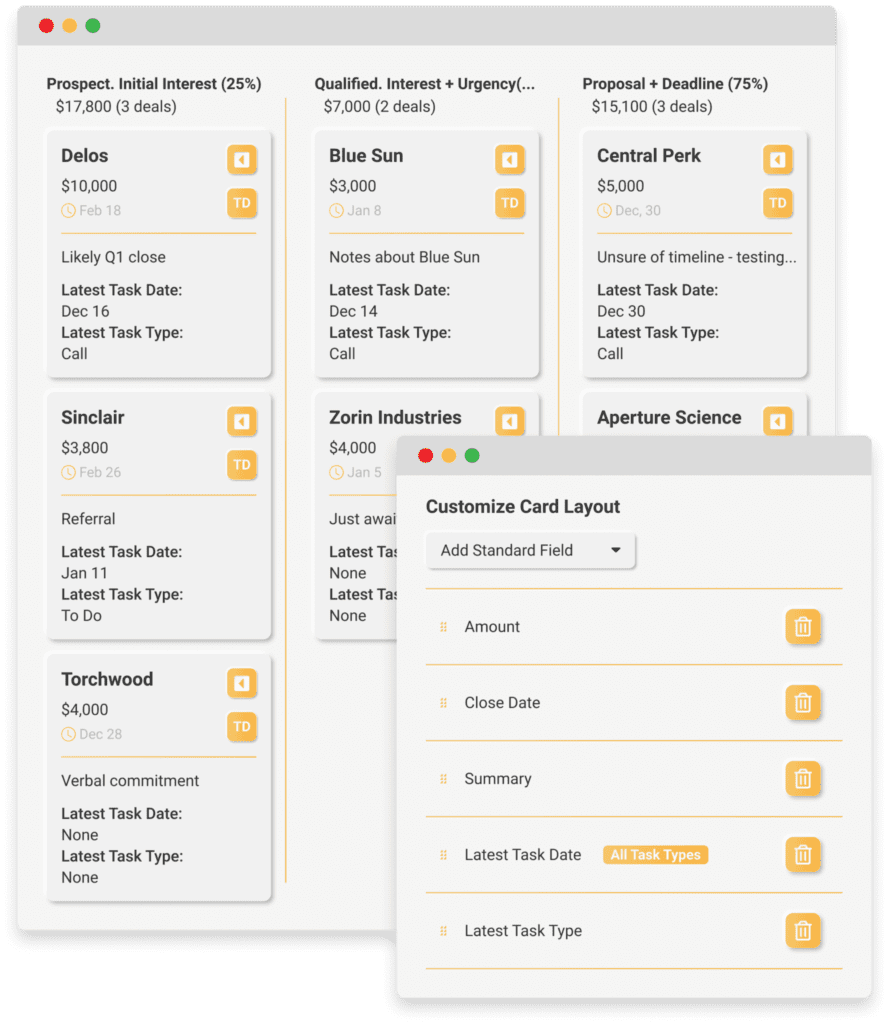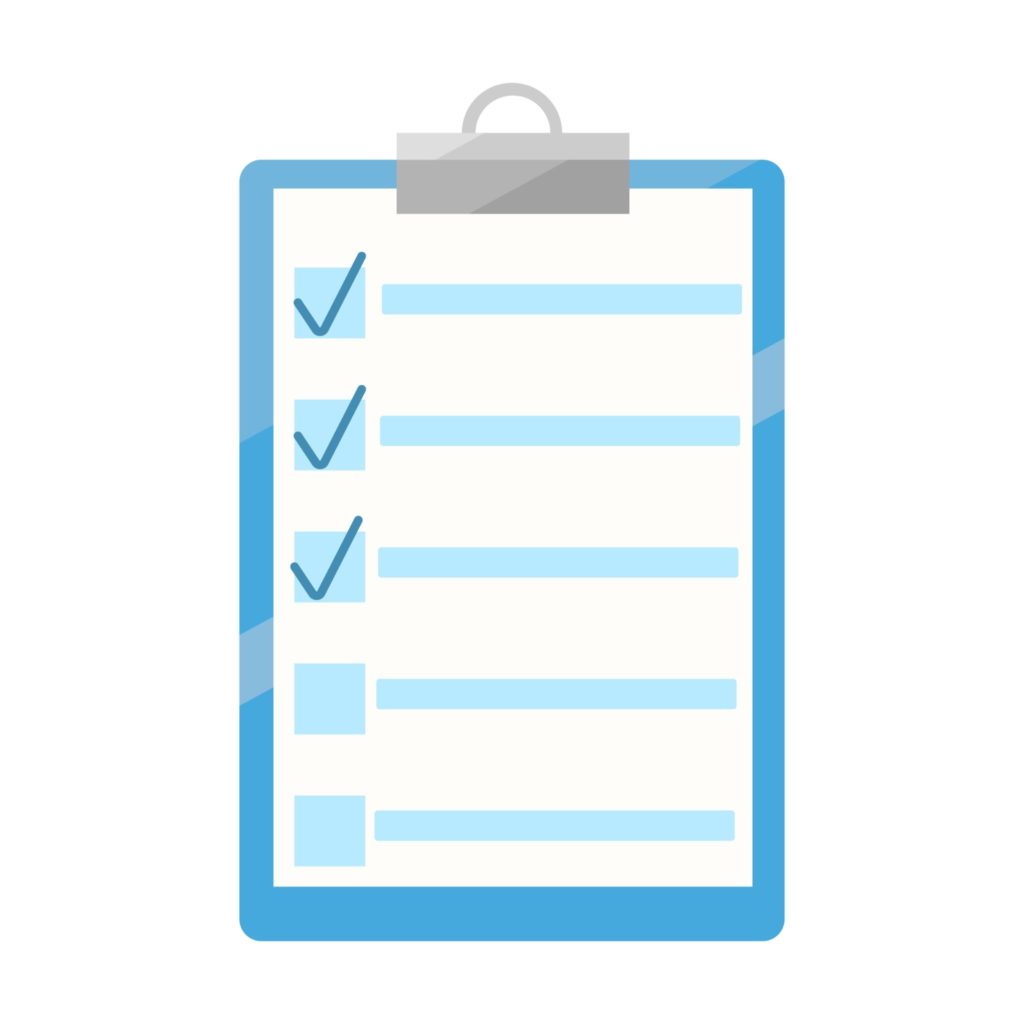Last updated on August 3rd, 2023

In this guide, you’ll learn how CRM metrics and KPIs can help you better measure business campaigns and decisions.
Many of the decisions you make in your marketing, sales, and customer service need to have some data to justify them.
Sure, some decisions can be instinctive, but your CRM is the best tool to base most of your ideas on because of metric data.
But first, you need to understand what these metrics are all about. Then, on top of that, make distinctions on what metrics are most the most important KPIs.
Table of contents:
- What Are CRM Metrics?
- CRM KPIs vs Metrics
- What Are The Types Of CRM metrics?
- How Do You Measure CRM Effectiveness?

VipeCloud is the only Automation tool your small business needs to
be the hero to your customers.
With Email, Texting, Social, Suites, Chat, Stories, Video Email & Sign Up Forms fully built-in, we provide you with the perfect platform to grow your business.
15 Day Free Trial – Get started risk free. No CC needed.
What Are CRM Metrics?
CRM (Customer Relationship Management) systems come with a load of metrics.
These CRM metrics are data that help you quantify the results of your CRM campaigns and measure the quality of your business decisions.
By “CRM campaigns,” I’m referring to the automation, procedures, and actions you take to improve the big 3 areas of your business: Your marketing, sales, and customer relations.
Here are some quick examples of CRM metrics (we’ll cover these soon):
- Customer Lifetime Value
- Deals Closed/Won Rate
- Customer Acquisition Cost
- Length of Average Sales Cycle
Metrics show up in many places, and some of them may serve as part of your CRM key performance indicators.
What is considered “valuable” to your business is often based on what you want to accomplish.
When you study your metrics carefully, you gain better control of your results because you can tweak your efforts and forecast your results based on the changes you’ve made.
CRM KPIs Vs. Metrics
KPI stands for Key Performance Indicators. These are the variables you focus on to reach a particular goal.
Certain CRM metrics may be part of KPIs, while others aren’t significant. KPIs keep you on track and narrow down what’s valuable.
For instance, in sales, say your goal is to land 4 new clients next month. A good CRM key performance indicator to measure is the number of sales calls and leads entering your pipeline.
But things like website visits wouldn’t be a directly relevant CRM key performance indicator to track, although it is STILL a metric.
These 2 things that affect what KPIs you’ll pay attention to:
- Your goal(s)
- Timeframe
Many companies also take the SMART (Smart, Measurable, Achievable, Relevant, Time-based) goals approach. Here are two examples:
“Grow our email list by 600 subscribers in quarter 4” (Important KPIs: email subscribers, email sign-up form visits)
And:
“Reduce our custom churn rate by 5% next year” (Important KPIs: customer churn rate, customer retention rate, customer lifetime value.)
What Are The Different Types Of CRM Metrics?
Let’s cover some common CRM metrics your customer-focused business should track.
Top Marketing Metrics
We’ll start by discussing the most important marketing metrics.
Conversion Rate
This metric is listed first because it’s one of the closest metrics to your revenue.
In marketing, your conversion rate is the percent of people that complete an action that you want.
Let’s say a SaaS company’s demo landing page gets 100 visitors in the first 2 weeks and gains 11 leads.
This would mean they’d have a conversion rate of 11% from their demo landing page in those 2 weeks.
Using your CRM, you could track this using a sign-up forms feature (a graph showing form views to form completions in January).

Conversion rates are also powerful because they tell you the quality of traffic from marketing channels. For instance, if you’re testing landing pages, you could measure conversion rates to determine the top-performing pages.
Remember that conversion rate is also relative.
It will change from industry to industry.
If you’re in B2C and using CRM, the conversion rate from your email marketing will be different from the conversion rate of a B2B company.
That’s why smart marketers compare their numbers to two things:
- Their average industry conversion rates
- Their past conversion rates
If their numbers are better than either or both, they’re definitely on the right track.
And understanding industry-wide conversion metrics is as easy as finding web sources that show trends (but make sure it’s up to date and compare multiple sources for accuracy).
Click-Through Rate (CTR)
Your CTR is the percentage of viewers that click on your link to a new page.
CTR is what brings people to your conversion page, after all, so you want the percentage to be as high as possible.
For example, if you’re doing CRM email marketing, it’ll be harder for you to gain an ROI if your CTR isn’t that great.
Here are a few ways to get (and keep) a high CTR for both email and ads:
Email:
- Create enticing subject lines to get emails read (use a question, add their name, add curiosity.)
- A/B test between button links in your emails and regular links.
- Have a clear call to action
- Have an enticing offer (something your market cares about, a no-brainer for them.)
Ads:
- Test different ad-copies and creatives (try speaking directly to a target audience.)
- Clear CTAs
- Emphasize your discount offers
- Make your links short using a link shortener
- Add your link in multiple areas of the ad
Bounce Rates
Bounce Rates is another important CRM metric for email tracking. It’s important because it lets you know the deliverability of your emails.
Let’s face it, emails won’t arrive from time to time, but if you have a high bounce rate — it’s cause for concern.
Why?
A high bounce rate is suspicious for email systems, and they may flag you as a spammer.
When sending emails, you want your bounce rate to be less than 2% (<2%).
If it’s higher, try using something like VipeCloud’s email verification tool to ensure you’re sending to the right people.

Think of verifying your email list consistently to avoid a high bounce rate, especially if it’s your primary marketing medium.
Top Sales Metrics
Once the conversion is made, it’s time for the sale to be made. Here are the most important sales metrics to track in your CRM.
Deals Won Rate

This metric is your percentage of deals closed in a given timeframe.
Sales is simply the strategies, workflows, and items you use to turn a prospect into a customer.
The deals won rate directly tells you the effectiveness of your sales process by calculating the number of people that become your customers:
Opportunities won / Total opportunities = Deals won rate
Example: 33 closed deals / (100) = 33% deal win rate.
If you find that your win rate is below your industry average, you want to see if you’re qualifying your leads enough:
- Are you asking key questions during your discovery calls? (Use the BANT sales formula)
- Are you scoring your leads? (Using a lead scoring tool)
- Do you have a high volume of leads to get a good sample size?
- Are your sales reps trained well to convey the value of your product?
These are big questions that can get the gears turning when you’re looking to close more.
With more closed deals, your business, of course, makes more revenue, giving you more capital to invest in marketing, hiring, and improving your product.
Monthly, Quarterly, And Yearly Revenue
This metric tracks the money made from your deals.
As straightforward as it is, it can be telling when you go back and see how your business revenue reports have changed as time went on.
Maybe you implemented newer sales approaches or tailored your product better to your market, and it started to reflect on the results you got.
With revenue, you’ll notice that most of it will come from your existing customers rather than new ones.
So the takeaway?
One of your BEST revenue-building assets is the retention of your customers, especially if you have a subscription-based business model!
A Rosetta Consulting Customer Engagement Consumer Survey reported that your engaged customers buy 90% more often, spend 60% more on each transaction, and are valued 3x more annually compared to other customers.
Number Of Opportunities
Your sales pipeline lists the deals that are pending and the ones that are closed.
Your number of deals and where they are MATTER because you can see where roadblocks are accumulating.
For instance, if you have a high percentage of prospects with initial interest, but then you have a high number of deals lost, then there’s a sales problem that’s likely happening.
Conversely, if you have fewer sales-qualified leads (SQLs) but they’re more qualified than before, you may find the number of deals won to increase (since they’re a better fit).
Opportunity Size
Opportunity size gives a targeted or estimated value of closing a deal.
Here’s an example from VipeCloud’s customizable sales pipeline:

Certain deals are bigger than others, meaning the bigger ones typically have more value to the company.
With this in mind, the company can better prioritize bigger deals through tools like lead scoring!
But of course, this doesn’t mean to neglect smaller deals because those tend to close faster on average. (Larger deals may require more decision-maker input(s) and meetings.)
Length Of Average Sales Cycle (LASC)
Your LASC is how long it takes your company to close deals on average (from initial contact to the close.)
Your sales cycle encompasses all your marketing and sales stages.
It may look like this:

Just like other metrics, comparing your sales cycle length to your industry average will help you determine how your company measures up.
When it comes to sales cycle management, here are some variables that could affect your LASC:
- The buying process – how your service is purchased, what paperwork needs to get done
- How much your market values your product
- How well you convey the value of your product
- How you follow-up
- The number of shareholders that need to be involved in the deal
- The price of your product
With a short sales cycle, you’re closing deals faster and giving your team more time to get to newer deals or follow up on old ones.
Top Customer Service Metrics
Your customers are the lifeblood of your business, and these CRM KPIs are critical to your company’s longevity.
Customer Retention Rate
Customer Retention is how your CRM measures the number of customers your business retains over a timeframe.
For instance, If you began the year with 100 customers and lost 15 by the end of the year, your retention rate is 85%.
Earlier, we mentioned how customer retention plays a significant role in revenue (most of your revenue will likely come from existing customers).
So it stands to reason that this will be the metric you also track when setting revenue as a KPI.
Customer Churn Rate
Your customer churn rate is the opposite of your retention rate. So in our previous example of the 85% retention rate, the customer churn rate would be 15%.
“Churned” customers are typically those that stop adding revenue to your business. Some businesses may have different definitions of churn rate, including customers who end free subscriptions as part of their churn rate.
But the big picture is that this is one of the metrics you want to be as small as possible.
So here are a few ways to reduce your customer churn rate:
- Beef up customer service – Reach out to customers about their experience while they’re using your product. Have account managers offer guidance as much as possible
- Continually improve on your product based on market research
- Look at customer churn patterns – When are customers stopping services? What is your CLV?
- Offer down-sells when customers would like to end services – Amazon does a fantastic job of this with their Prime membership subscription.
- Reward your top customers – This can help your long term customers stick with you even longer
Customer Lifetime Value (CLV)
Often when companies gain new customers, they may only look at the initial purchases or two that the customer makes.
But customer lifetime value (CLV) is the measure of how much value a customer brings to your business in a particular time frame.
Someone could buy a $1,000 higher ticket product from you once, and someone else can buy a $50 lower ticket product subscription for 2 years straight.
In this scenario, the second person has a higher CLV:
Person 1: 1,000 (one-time purchase)
Person 2: $1,200 (24 months)
If you’re a marketing agency, talking about CLV with your prospects is a great way for them to learn about the deal they’re getting. You can pinpoint their average customer lifetime value, compare it to your management fee across that same time frame and talk about their profitability.
CLV is an excellent measurement of how well you provide value to your market. The longer it is, the better.
How Do You Measure CRM Effectiveness?

As the central hub of your business CRM should fit your needs.
Before investing in one or even migrating to a new one, think of some “must-haves” and make a checklist.
Here are metrics that can hint to the effectiveness of your CRM:
- Customer Retention Rate
- Marketing ROI
- Customer Churn Rate
- Net Promoter score (This measures customer satisfaction, they can rate your company based on a point scale.)
And here are somethings to consider in your CRM evaluation:
- Sales capabilities (pipelines, lead scoring, clear and diverse sales metric data)
- Marketing avenue versatility (social media, email, text messaging, ad platform connectivity)
- Automation that supports your unique business goals
- How well it tracks and updates your metrics
- Customizability
- Price
- Application integrations
- Ease of use
CRM success comes down to many of these essential requirements.
That’s why VipeCloud has worked hard over the years to provide an unmatched CRM experience for its customers.
The Sales & Marketing Suite is built for businesses that want the robust functionality and versatility of CRM without the difficult learning curve and heavy pricing.
Gain access to the critical metrics and insights that truly move the needle for your business.
Try it today for a free 15-days (no card required).
If you want us to demo it for you, feel free to request a free one here.

Leave a Reply